Padma Shri Artist From Madhya Pradesh Once Worked As A Daily Wager, Earning Rs 6
From painting on rocks with twigs to having her artwork displayed in UK and USA and being conferred with a Padma Shri for her immense contributions in preserving the traditional Pithora art form, Bhuri Bai from Madhya Pradesh has definitely come a long way.
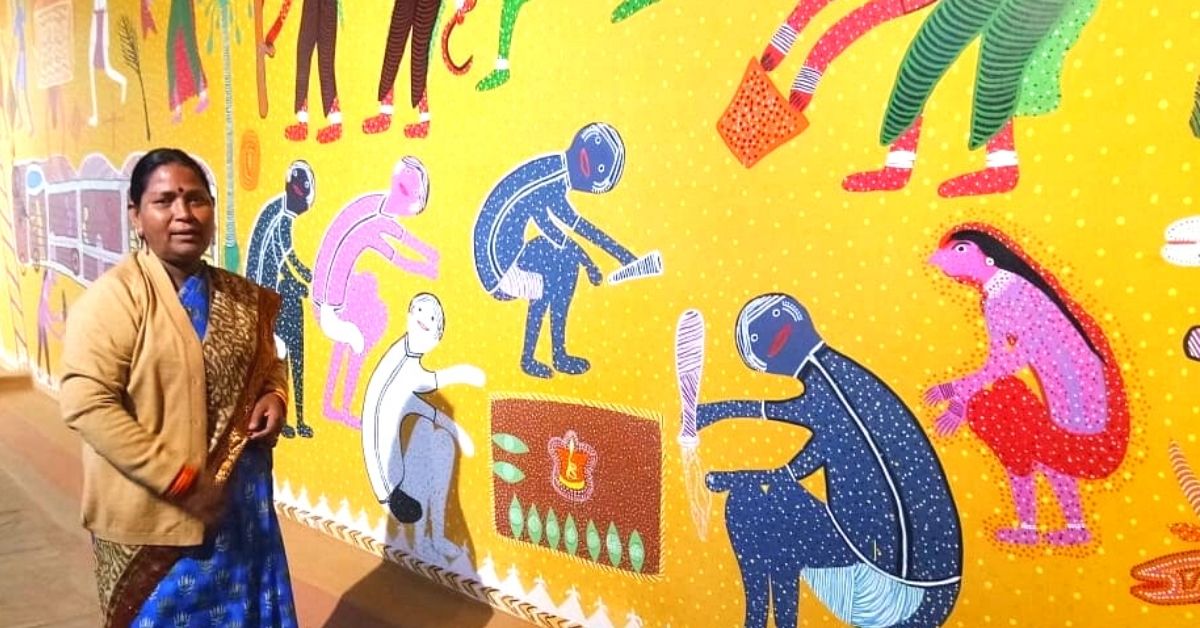
Rising from the ashes and breaking barriers is her forte.
Madhya Pradesh-based Bhuri Bai has experienced acute poverty first hand and has also worked as a child labourer just to be able to afford one square meal. When she was 10, her house was burnt down in a fire, so her family built a makeshift house from hay and lived there for years.
She was a child bride and post-marriage survived on a meagre income of Rs 6 per day. When Bhuri finally found a breakthrough with Pithora painting, an enriched folk art, her Bhil tribe condemned her for it as women weren’t allowed to indulge in art forms. They even played the patriarchal card by suggesting her husband was not man enough to earn as much as Bhuri was earning through her paintings.
However, the feisty Bhuri never let these adversities triumph over her innate talent and continued to move forward, using the skills of the ancient art.
On 25 January, she reached the height of validation after receiving the prestigious Padma Shri for her contributions in preserving the traditional art form and taking it to the world stage. From Lucknow to London, Mumbai, Delhi, Hyderabad to the United States and the United Kingdom, her paintings have travelled far and wide.
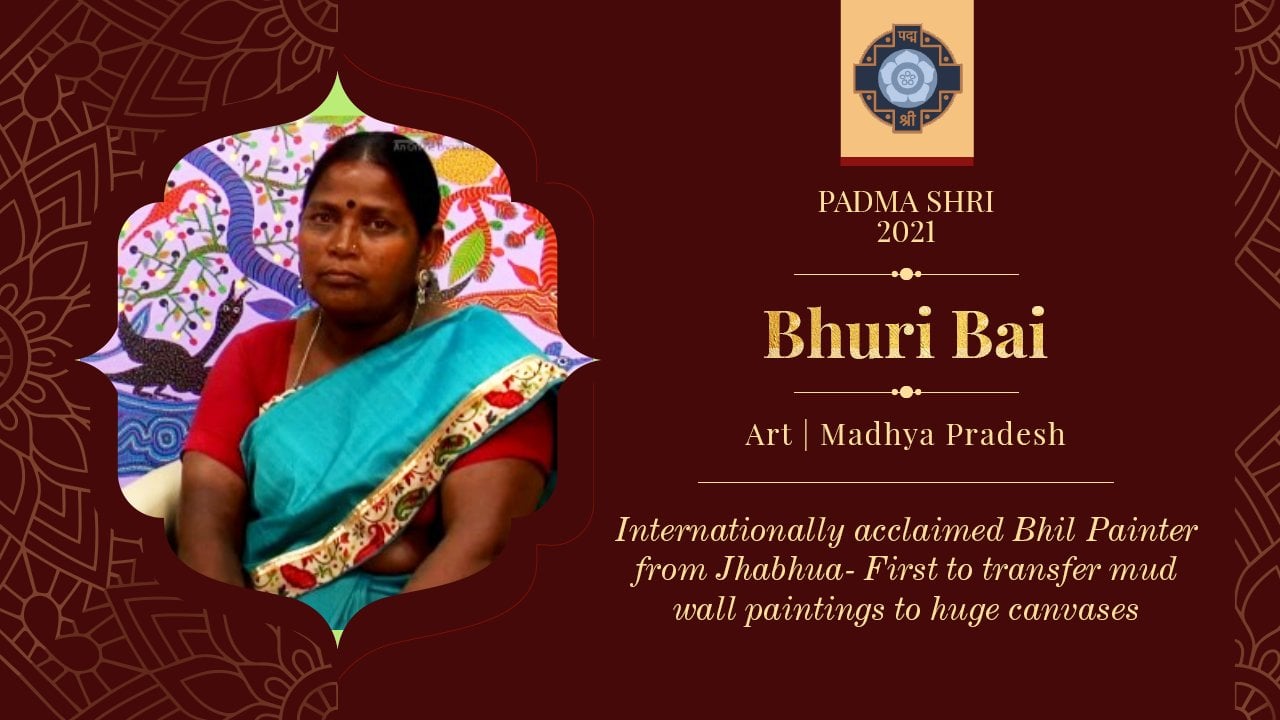
The 52-year-old, who now lives in Bhopal with her husband and children, speaks to The Better India and couldn’t contain her excitement on receiving India’s fourth-highest civilian award.
“On 25 January I received a call from a government ministry informing me about the award. At first, I thought it was just another award until journalists started lining up outside my house. I am very honoured and proud to receive the award and I want to dedicate this to all the girls in rural areas who dare to dream and not let the circumstances define their life,” says an ecstatic Bhuri.
Staying true to her roots, Bhuri has not let the award get to her head as she continues to follow her daily routine and go to work at Madhya Pradesh Tribal Museum in Bhopal. Her innocence and humility are intact, something that is mirrored in all her artworks.
Bhuri’s tale is worthy of a biopic and it begins in Jabhua’s rural landscape in the late 1960s.
An Accidental Discovery
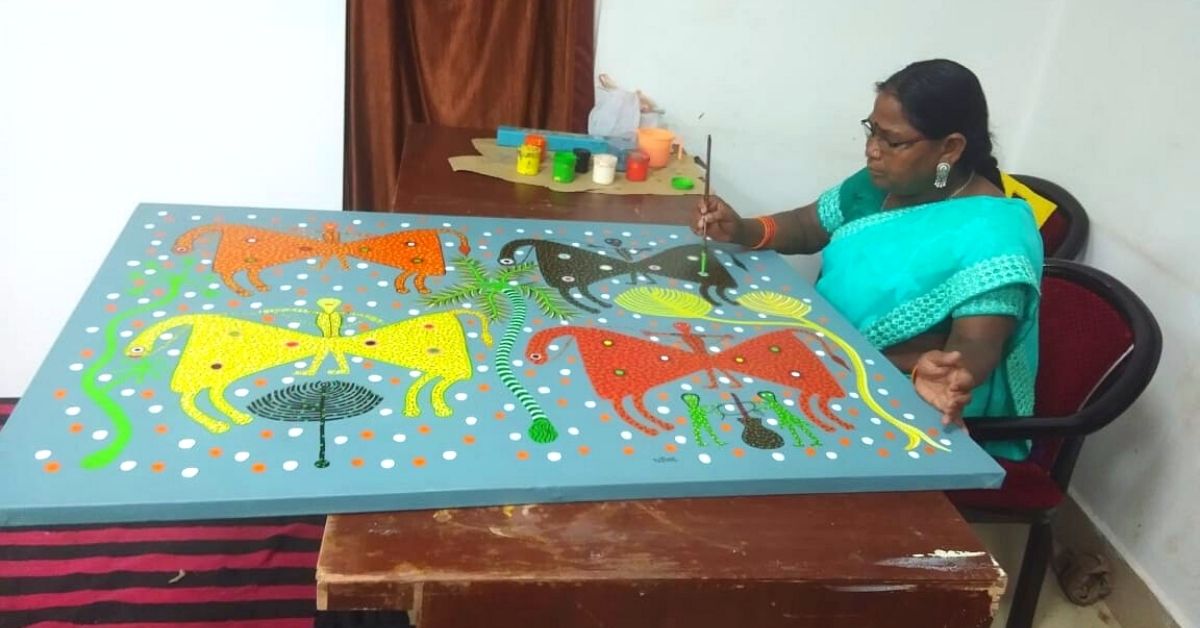
The Jhabua district is home to the Bhil tribe, also referred to as the ‘brave bowmen of India’, who predominantly survived on forest resources in the 1800s. With time, agriculture became their main occupation. Surrounded by the Mahi river in the north and the Narmada in the south, this region is also the hub of ‘Pithora’, a spectacular ancient art form that is created on walls.
The Pithora paintings are soaked with religious and cultural significance. The paintings mainly use three lucky mascots of Bhilalala mythological stories — sun, moon and horses to creatively portray daily activities of rural life like hunting, ploughing and farming. The process of this indigenous painting begins with Lipai meaning covering the background of walls with cow dung, water and chuna. The walls are then embellished with birds, animals, trees in vivid colours. The selling point of Pithora is that no two paintings will ever be the same. Each artist uses their own creativity, imagination, patterns and colour combinations.
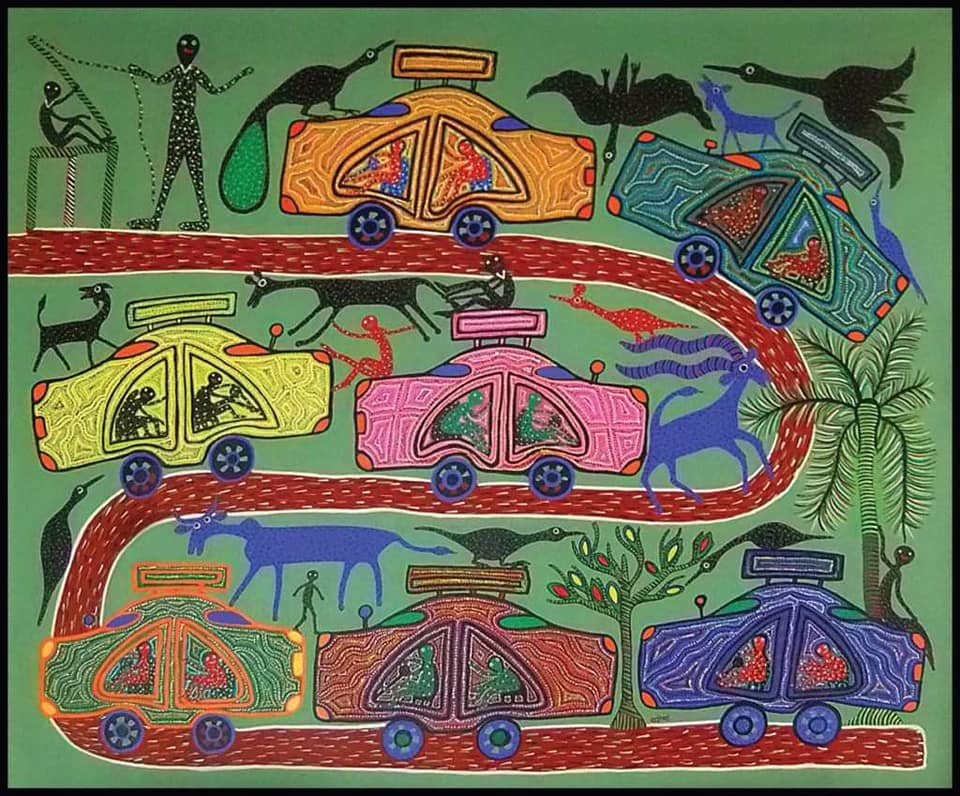
Bhuri Bai was born in Pitol village of Jhabua. Her parents worked as farm and wage labourers to feed Bhuri and her siblings. Like everyone in the village, paintings were an integral part of Bhuri’s family as well.
“In their spare time, my parents would extract natural colours from flowers, leaves and spices to paint on house walls. Since this was our only source of entertainment I learnt it from my parents and became obsessed with it. I found every excuse to draw a peacock, bird or sun on stones and leaves with twigs. Back then, we didn’t have brushes or paper,” recalls Bhuri.
Her skills improved over time and she would often be invited to other houses in the village to draw. Bhuri spent her teenage years juggling as a construction labourer and painter.
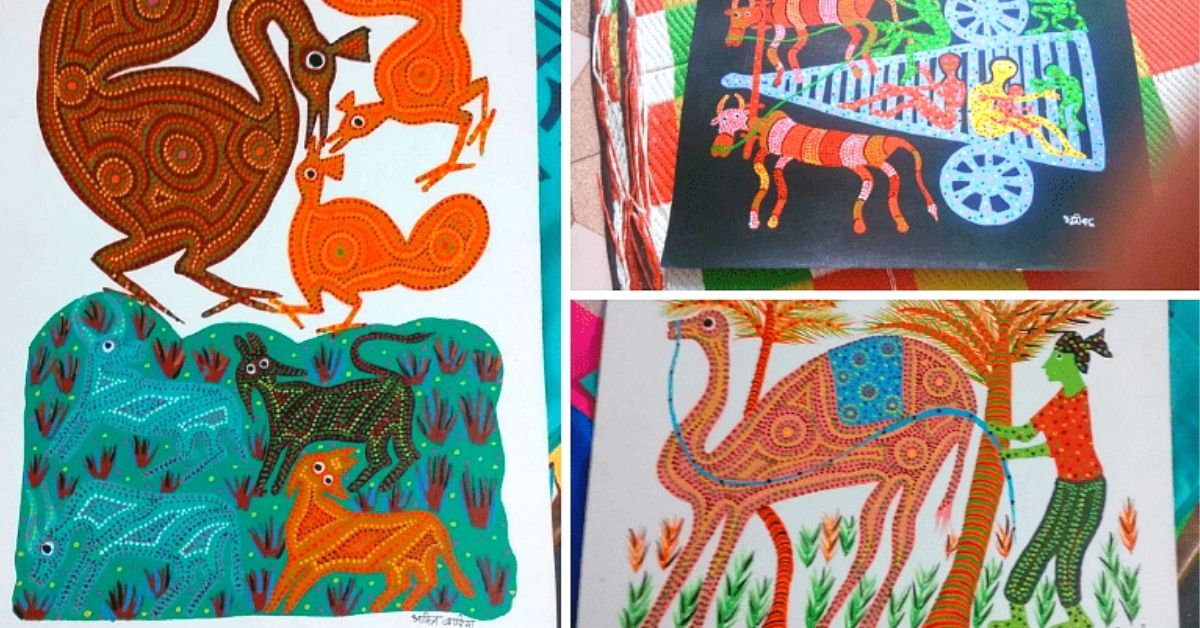
At 16, Bhuri got married and moved to Bhopal with her husband, Johar Singh who was also a wage labourer. Since this was Bhuri’s first time outside her village, she experienced a culture shock.
“I felt like a lost lamb in the gigantic city that peddled without brakes. Everyone, including my husband, was a stranger at first and I barely had the time to adjust. I joined my husband who was working as a labourer at the Bharat Bhavan,” she adds.
Bhuri found a sense of familiarity in her paintings and used her breaks to draw on stones, something that would eventually change her life.
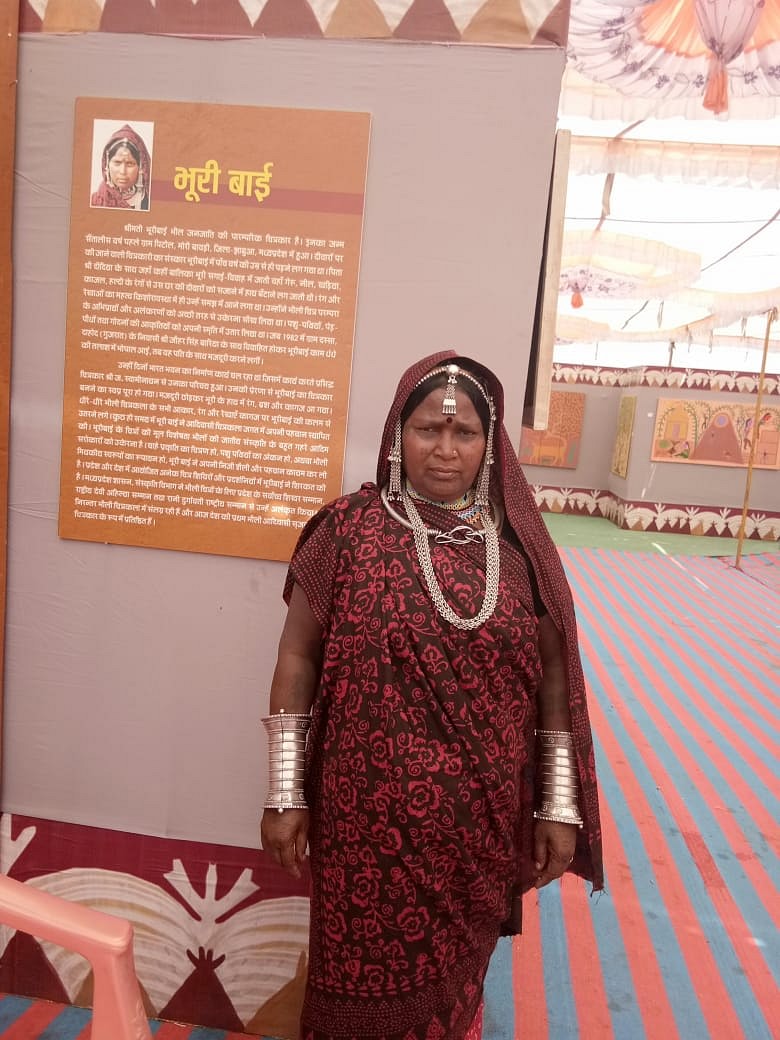
A few months later, renowned artist Jagdish Swaminathan was on the construction site. He saw Bhuri’s painted stones and asked her to replicate the same on paper. Impressed by her effortless transition from stone to paper, he asked her to draw more. For each painting she made, Jagdish paid her Rs 50, an amount that was much higher than her daily wage of Rs 6.
This is how Bhuri stepped into the world of art and started her life as a professional artist in the 80s.
Being An Inspiration

Bhuri is credited for being one of the pioneering women from her community who took forward the rich tribal lineage of Pithora paintings while creating livelihood opportunities in an otherwise region marred by infrastructural constraints. She has the distinction of seeing her art travelling to several art galleries in India and abroad.
Accolades like Shikhar Samman, Devi Ahilya Bai Samman and Rani Durgavati Samman from the Madhya Pradesh government landed her a job at the Adivasi Lok Kala Academy followed by the Tribal Museum where she conducts workshops to preserve the art form.
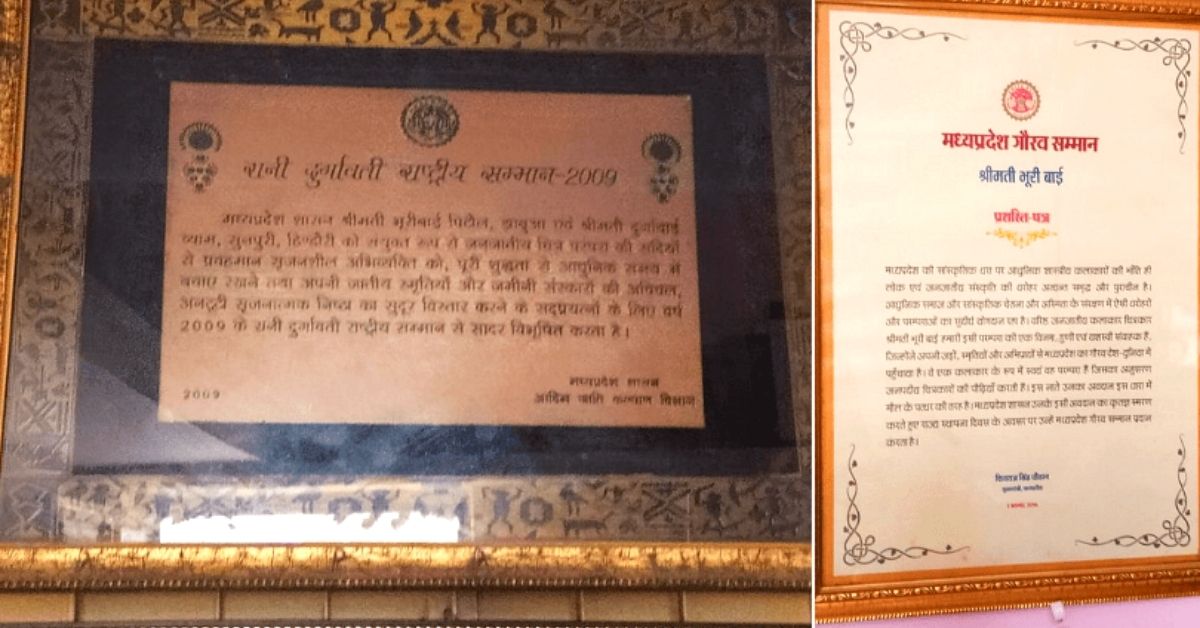
It is while working at the museum where Bhuri got an opportunity to master her craft and also simultaneously teach art students. She worked at the museum during the day and reserved the nights to create masterpieces that are worth millions. If in Jhabua she picked up the skills, here in Bhopal she refined and modified them to suit contemporary themes and ideas. Her extensive visits to other parts of the country also became a point of learning.
“It was being in the right place, at the right time that worked for me. I networked with a plethora of artists and agents who helped me fetch the right price for my work. Of course, the recognition encouraged me to do better, and my husband and children supported me unconditionally,” says Bhuri.
Forming an identity of her own in an era where lives are cemented in patriarchal norms and women are expected to remain within the limits of their house, was not a cakewalk.
On multiple occasions, the elderly from her village taunted her husband for letting her work outside their region and earning more than Johar. Initially, these translated into discords but eventually, Johar came around and even learnt the art from her.
Bhuri, who was once looked down upon by her community, now serves as an inspiration. Several women and girls have taken after her and are now earning their livelihood from paintings. Against all her personal losses, Bhuri made sure that her life blossomed through Pithora.
“I never thought that my passion for painting would become my identity. It feels surreal for a person like me to visit other countries like the United Kingdom and the United States and be recognised for my talent,” she says.
(Edited by Yoshita Rao)
If you found our stories insightful, informative, or even just enjoyable, we invite you to consider making a voluntary payment to support the work we do at The Better India. Your contribution helps us continue producing quality content that educates, inspires, and drives positive change.
Choose one of the payment options below for your contribution-
By paying for the stories you value, you directly contribute to sustaining our efforts focused on making a difference in the world. Together, let’s ensure that impactful stories continue to be told and shared, enriching lives and communities alike.
Thank you for your support. Here are some frequently asked questions you might find helpful to know why you are contributing?


This story made me
-
97
-
121
-
89
-
167











